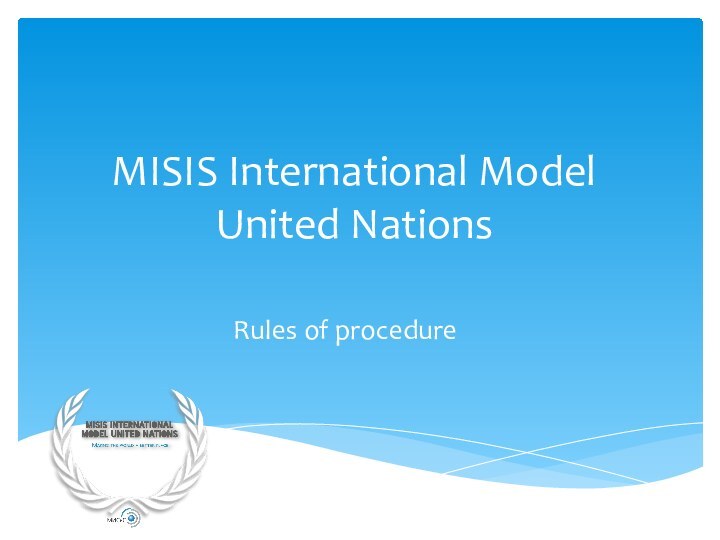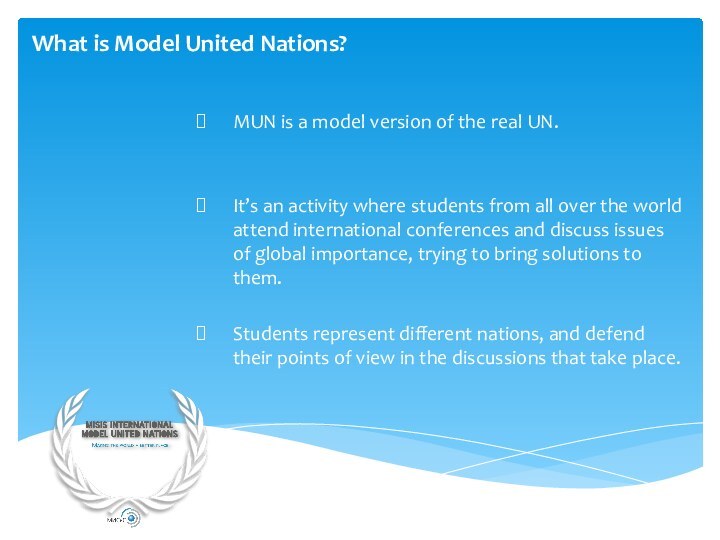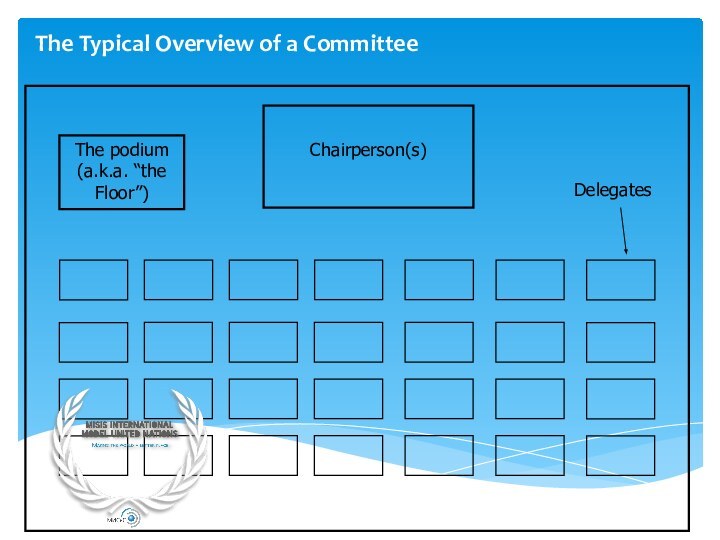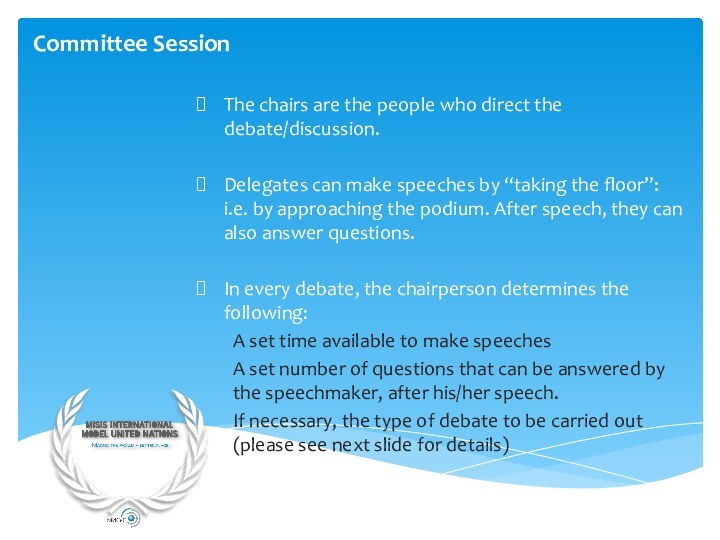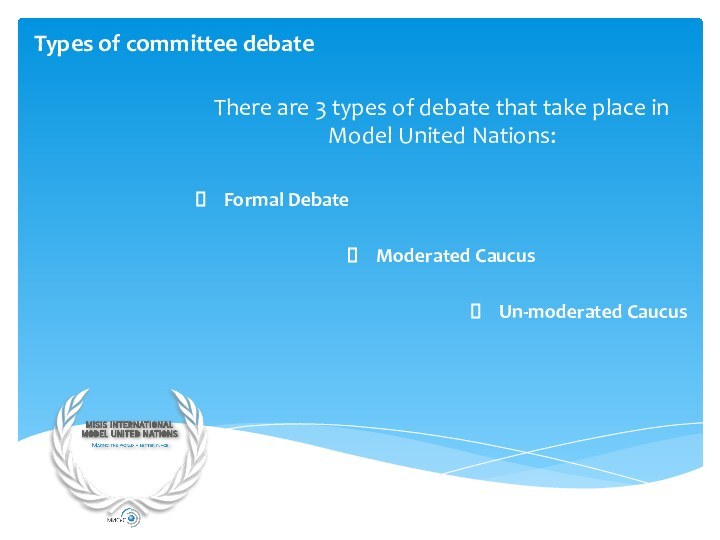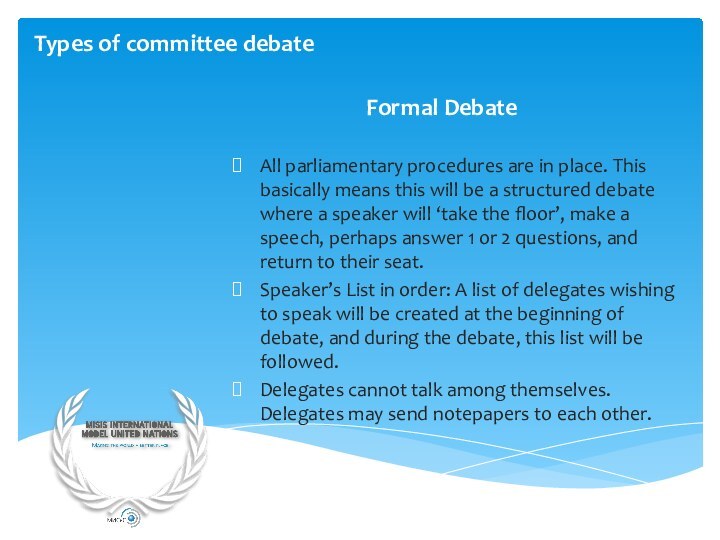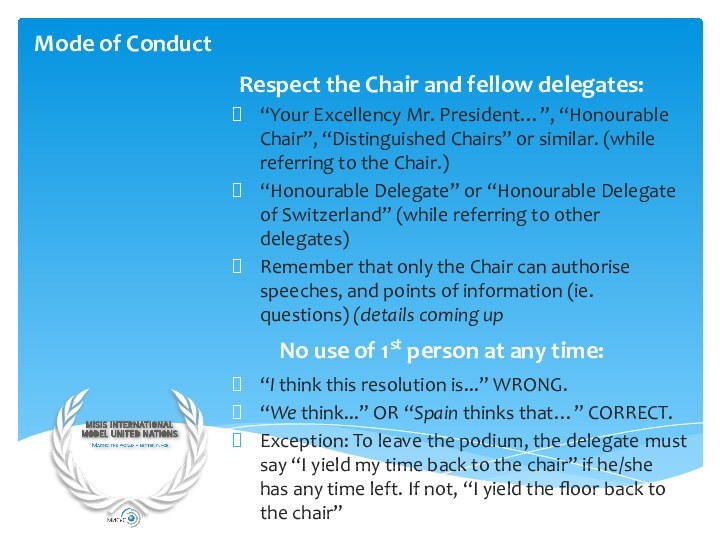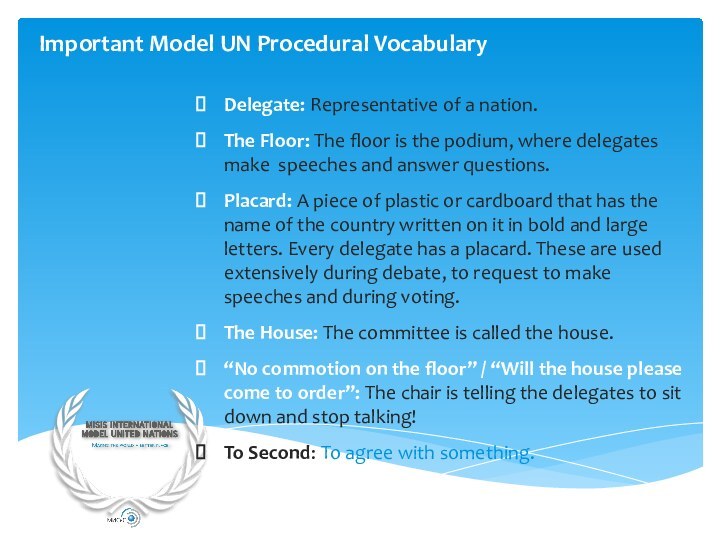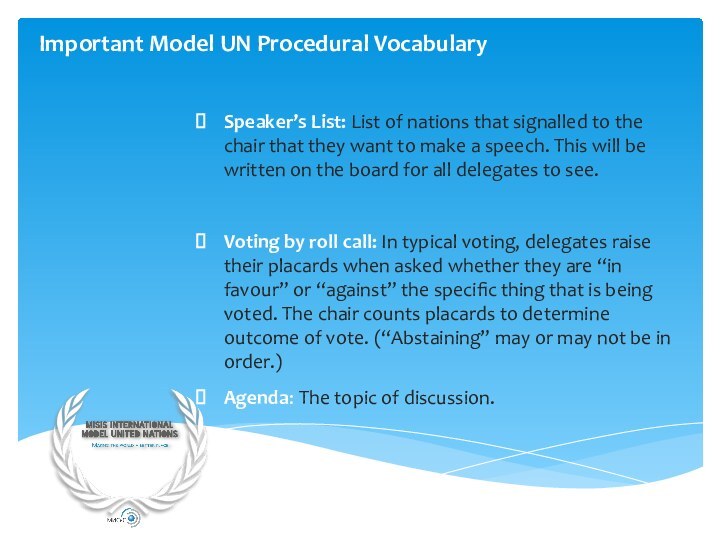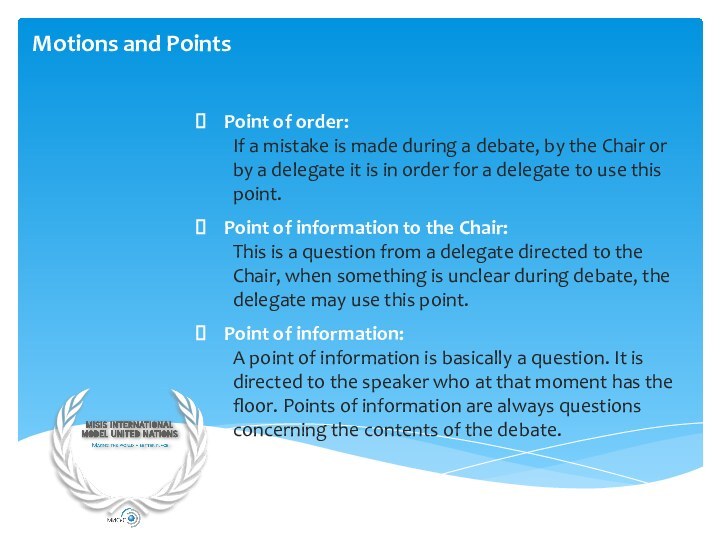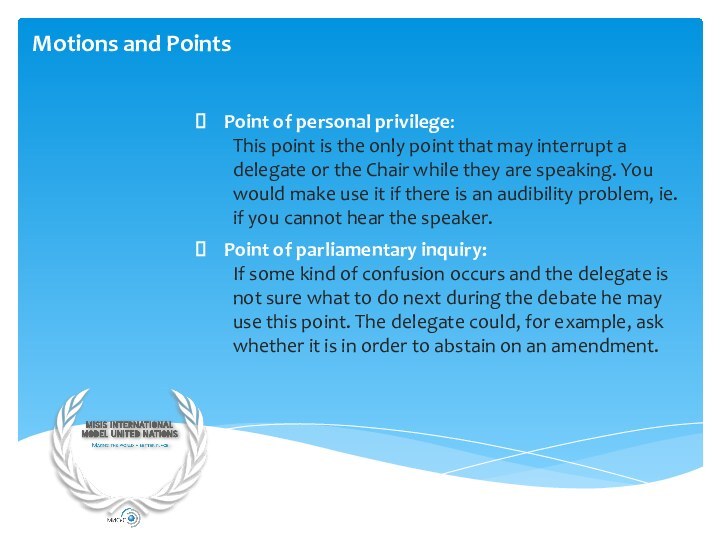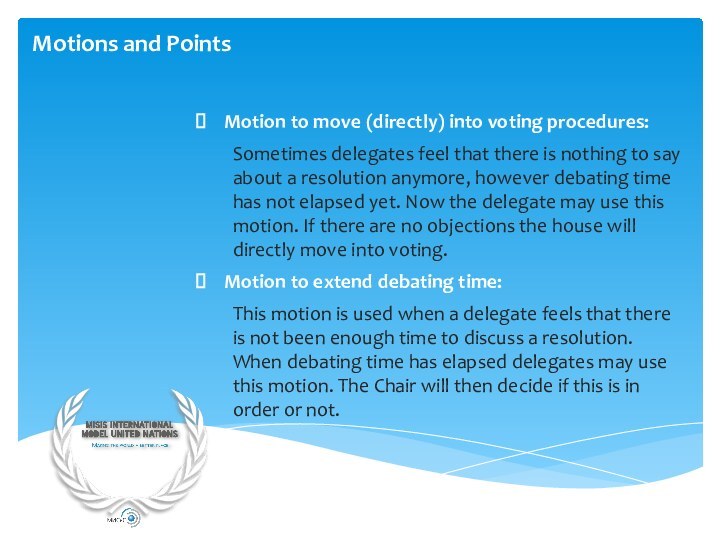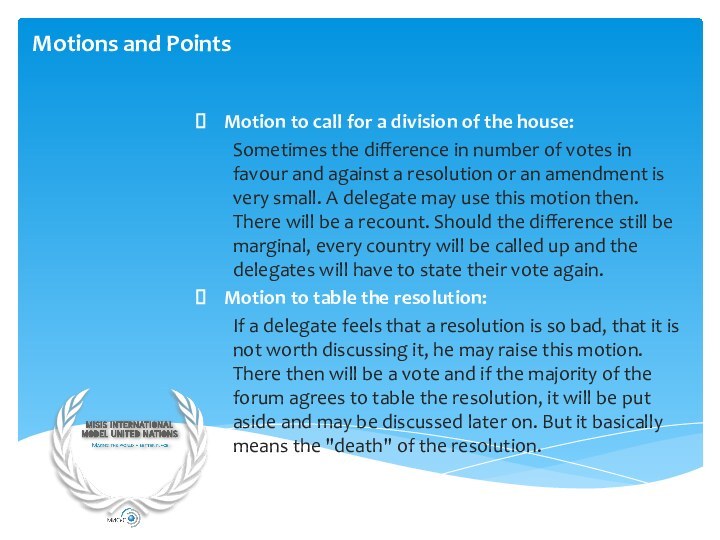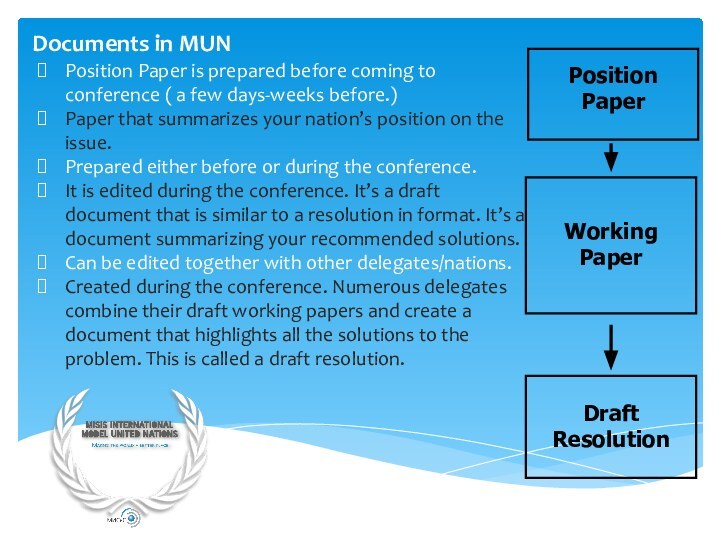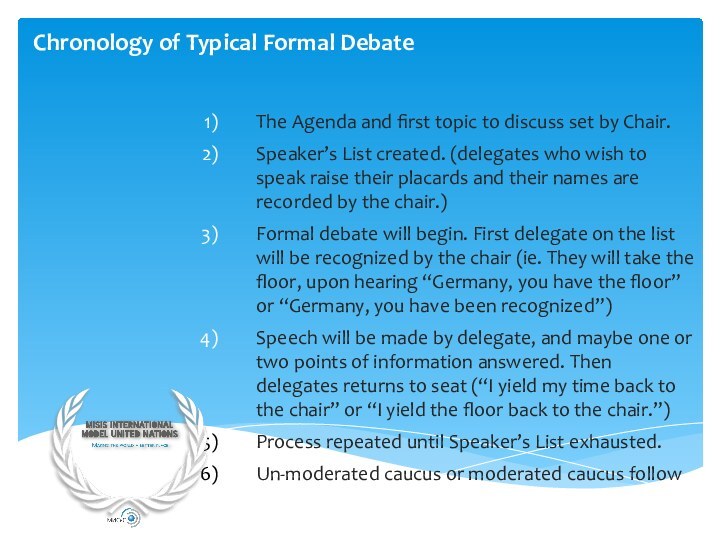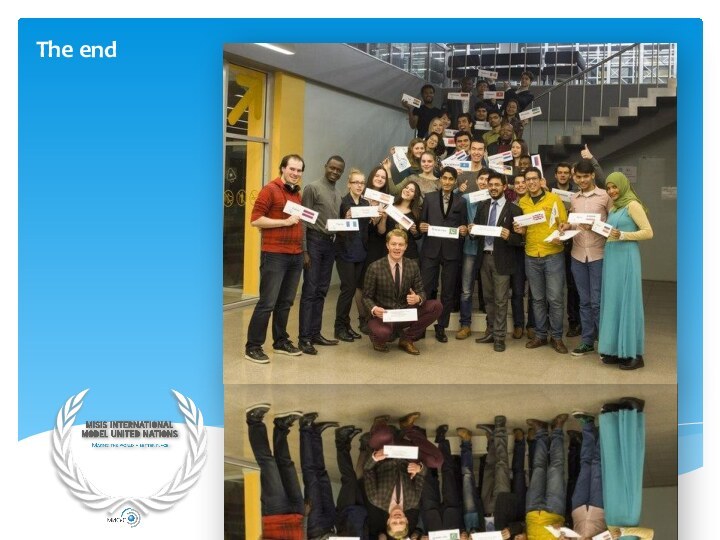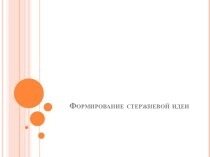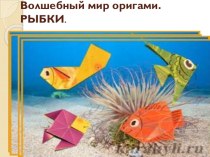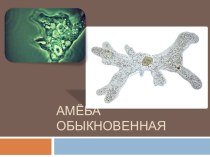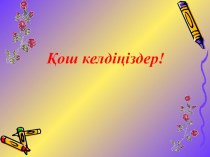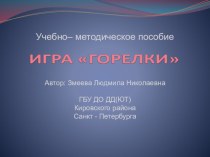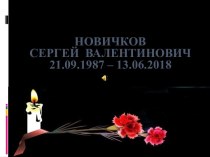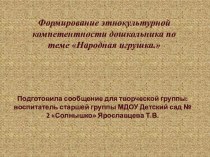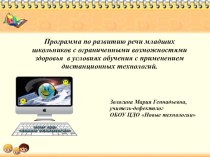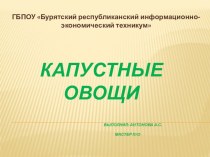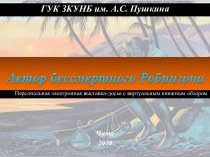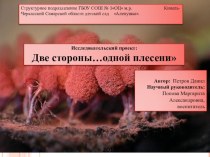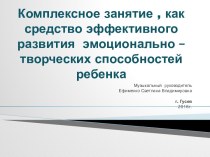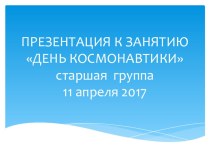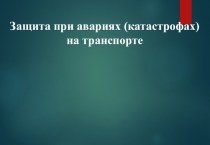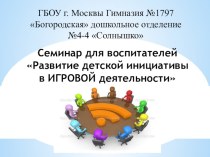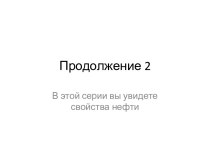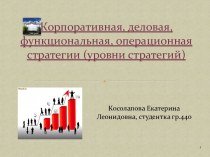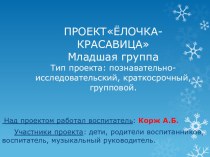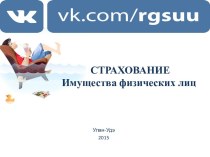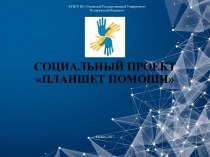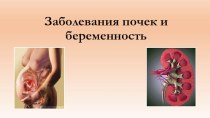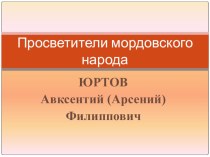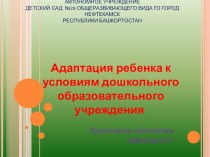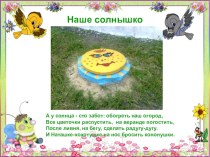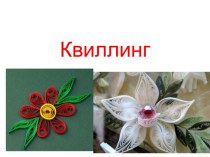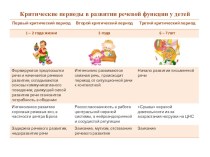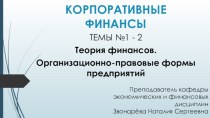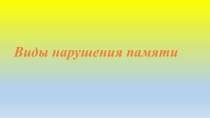Слайд 2
What is Model United Nations?
MUN is a model
version of the real UN.
It’s an activity where students
from all over the world attend international conferences and discuss issues of global importance, trying to bring solutions to them.
Students represent different nations, and defend their points of view in the discussions that take place.
Слайд 3
The Typical Overview of a Committee
Chairperson(s)
The podium (a.k.a.
“the Floor”)
Delegates
Слайд 4
Committee Session
The chairs are the people who direct
the debate/discussion.
Delegates can make speeches by “taking the floor”:
i.e. by approaching the podium. After speech, they can also answer questions.
In every debate, the chairperson determines the following:
A set time available to make speeches
A set number of questions that can be answered by the speechmaker, after his/her speech.
If necessary, the type of debate to be carried out (please see next slide for details)
Слайд 5
Types of committee debate
There are 3 types of
debate that take place in Model United Nations:
Formal Debate
Moderated
Caucus
Un-moderated Caucus
Слайд 6
Types of committee debate
Formal Debate
All parliamentary procedures are
in place. This basically means this will be a
structured debate where a speaker will ‘take the floor’, make a speech, perhaps answer 1 or 2 questions, and return to their seat.
Speaker’s List in order: A list of delegates wishing to speak will be created at the beginning of debate, and during the debate, this list will be followed.
Delegates cannot talk among themselves. Delegates may send notepapers to each other.
Слайд 7
Types of committee debate
Moderated Caucus
Almost all parliamentary procedures
still in place.
Speaker’s List not in order: After each
speech, when the delegate returns to his/her seat, the chair will ask: “Are there any delegates wishing to take the floor?”, and then will call on one delegate. This process will be repeated throughout the debate.
Extremely similar to Formal Debate.
Un-moderated Caucus:
Delegates are free to talk, roam around the room and discuss.
No formal parliamentary procedure in place. (ie. Free discussion time.)
Слайд 8
Mode of Conduct
Respect the Chair and fellow delegates:
“Your
Excellency Mr. President…”, “Honourable Chair”, “Distinguished Chairs” or similar.
(while referring to the Chair.)
“Honourable Delegate” or “Honourable Delegate of Switzerland” (while referring to other delegates)
Remember that only the Chair can authorise speeches, and points of information (ie. questions) (details coming up
No use of 1st person at any time:
“I think this resolution is...” WRONG.
“We think...” OR “Spain thinks that…” CORRECT.
Exception: To leave the podium, the delegate must say “I yield my time back to the chair” if he/she has any time left. If not, “I yield the floor back to the chair”
Слайд 9
Important Model UN Procedural Vocabulary
Delegate: Representative of a
nation.
The Floor: The floor is the podium, where delegates
make speeches and answer questions.
Placard: A piece of plastic or cardboard that has the name of the country written on it in bold and large letters. Every delegate has a placard. These are used extensively during debate, to request to make speeches and during voting.
The House: The committee is called the house.
“No commotion on the floor” / “Will the house please come to order”: The chair is telling the delegates to sit down and stop talking!
To Second: To agree with something.
Слайд 10
Important Model UN Procedural Vocabulary
Speaker’s List: List of
nations that signalled to the chair that they want
to make a speech. This will be written on the board for all delegates to see.
Voting by roll call: In typical voting, delegates raise their placards when asked whether they are “in favour” or “against” the specific thing that is being voted. The chair counts placards to determine outcome of vote. (“Abstaining” may or may not be in order.)
Agenda: The topic of discussion.
Слайд 11
Motions and Points
During debate, delegates can suggest several
actions, which are called “points” and “motions”.
In general, these
can never interrupt a speaker.
If a delegate wishes to make a point, he/she is supposed to raise his/her placard and state his/her point. The delegate will then be recognised by the Chair, and the delegate will rise and state his/her point.
If other delegates agree with a motion, they will shout "Second!”
A point cannot be seconded. (because there is no need to.)
Слайд 12
Motions and Points
Point of order:
If a mistake is
made during a debate, by the Chair or by
a delegate it is in order for a delegate to use this point.
Point of information to the Chair:
This is a question from a delegate directed to the Chair, when something is unclear during debate, the delegate may use this point.
Point of information:
A point of information is basically a question. It is directed to the speaker who at that moment has the floor. Points of information are always questions concerning the contents of the debate.
Слайд 13
Motions and Points
Point of personal privilege:
This point is
the only point that may interrupt a delegate or
the Chair while they are speaking. You would make use it if there is an audibility problem, ie. if you cannot hear the speaker.
Point of parliamentary inquiry:
If some kind of confusion occurs and the delegate is not sure what to do next during the debate he may use this point. The delegate could, for example, ask whether it is in order to abstain on an amendment.
Слайд 14
Motions and Points
Motion to move (directly) into voting
procedures:
Sometimes delegates feel that there is nothing to say
about a resolution anymore, however debating time has not elapsed yet. Now the delegate may use this motion. If there are no objections the house will directly move into voting.
Motion to extend debating time:
This motion is used when a delegate feels that there is not been enough time to discuss a resolution. When debating time has elapsed delegates may use this motion. The Chair will then decide if this is in order or not.
Слайд 15
Motions and Points
Motion to call for a division
of the house:
Sometimes the difference in number of votes
in favour and against a resolution or an amendment is very small. A delegate may use this motion then. There will be a recount. Should the difference still be marginal, every country will be called up and the delegates will have to state their vote again.
Motion to table the resolution:
If a delegate feels that a resolution is so bad, that it is not worth discussing it, he may raise this motion. There then will be a vote and if the majority of the forum agrees to table the resolution, it will be put aside and may be discussed later on. But it basically means the "death" of the resolution.
Слайд 16
Documents in MUN
Position Paper is prepared before coming
to conference ( a few days-weeks before.)
Paper that summarizes
your nation’s position on the issue.
Prepared either before or during the conference.
It is edited during the conference. It’s a draft document that is similar to a resolution in format. It’s a document summarizing your recommended solutions.
Can be edited together with other delegates/nations.
Created during the conference. Numerous delegates combine their draft working papers and create a document that highlights all the solutions to the problem. This is called a draft resolution.
Position Paper
Working Paper
Draft Resolution
Слайд 17
Chronology of Typical Formal Debate
The Agenda and first
topic to discuss set by Chair.
Speaker’s List created. (delegates
who wish to speak raise their placards and their names are recorded by the chair.)
Formal debate will begin. First delegate on the list will be recognized by the chair (ie. They will take the floor, upon hearing “Germany, you have the floor” or “Germany, you have been recognized”)
Speech will be made by delegate, and maybe one or two points of information answered. Then delegates returns to seat (“I yield my time back to the chair” or “I yield the floor back to the chair.”)
Process repeated until Speaker’s List exhausted.
Un-moderated caucus or moderated caucus follow.
